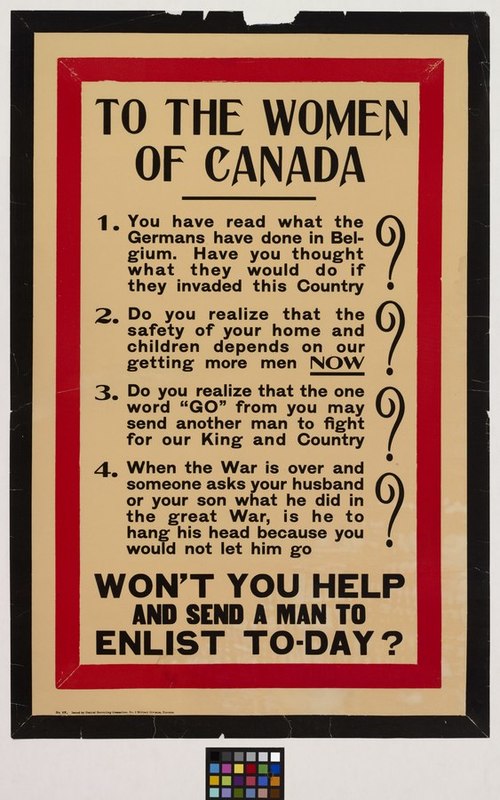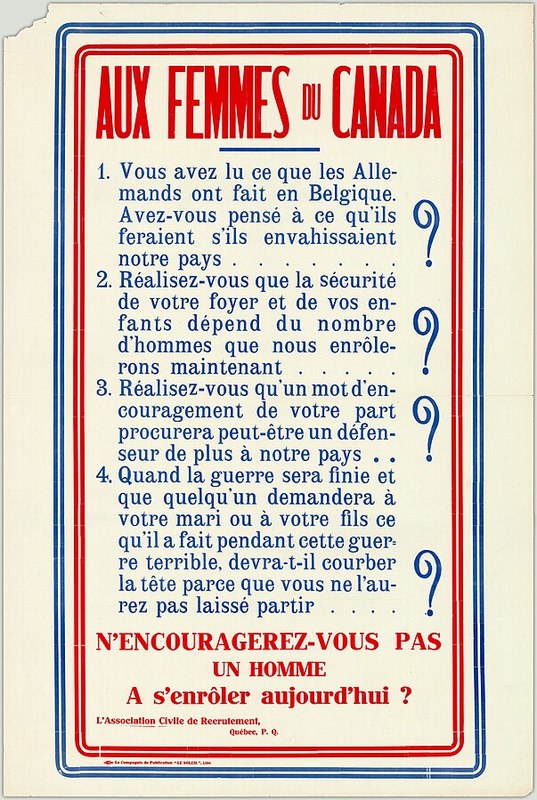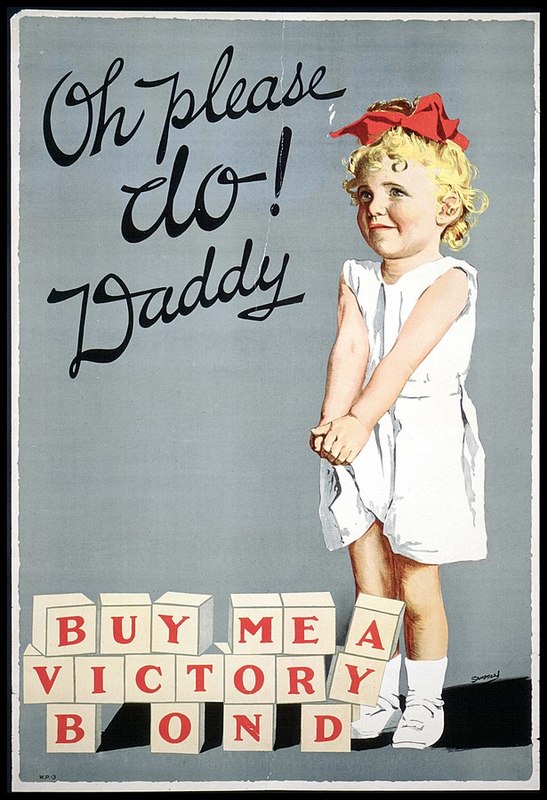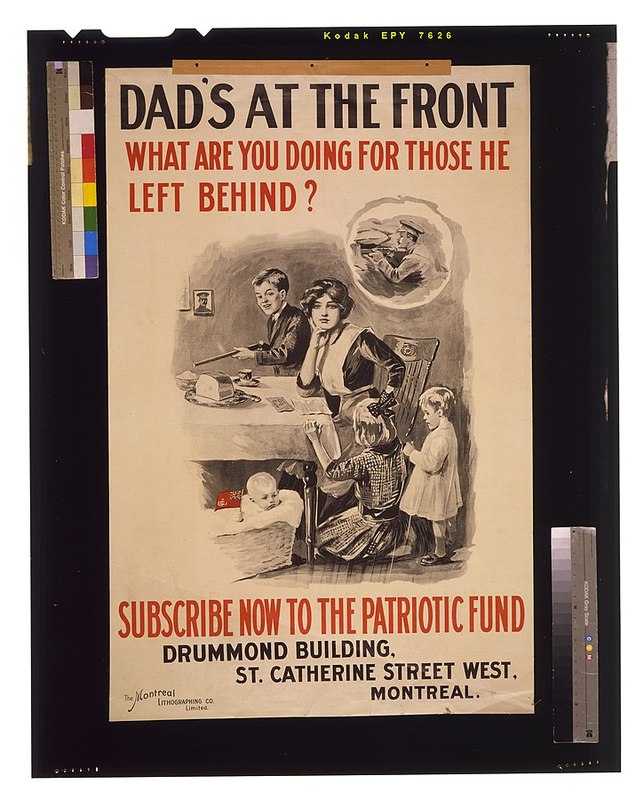Women in Propaganda
Aside from working and contributing to the war effort, women were also embedded within wartime propaganda. Two factors were responsible for women being both the subjects and the targets of propaganda. The first is, that they made up a large portion of the population that remained during that war, therefore they were the largest market with the most power (Glassford and Shaw, 2012). The other reason was that the female image evoked such a strong emotional response, from both women and men, that the government utilized it so that their propaganda would be more impactful. For men, the female image is often associated with innocence, and when this innocence is placed within the context of war, it aims to inspire men to enlist to help protect it. (Alexander, 2012). As the war continued, and many women became involved with the war effort, the image of a nurse became a “dominant symbol of patriotic womanhood” and was used to encourage women to continue their fight (Quiney, 2012).




